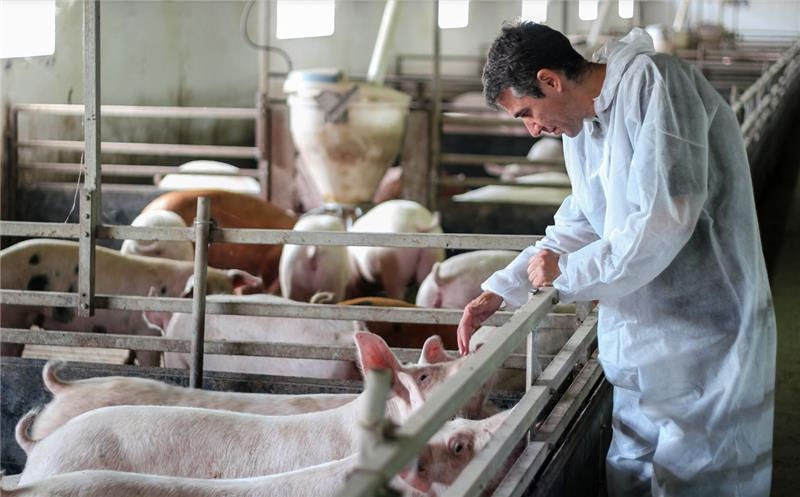Porcine reproductive and respiratory syndrome virus (PRRSv) is one of the major causes of disease in swine production and has recently been shown to cost the industry 1.2 billion USD each year.1 It is a virus that continues to plague the global swine industry, with newer variants threatening herd immunity each year. Recently, outbreaks of a highly virulent strain of PRRSv 2 (LIC.5) have wreaked havoc on farms in the Midwest of the United States, causing veterinarians, production specialists and nutritionists to consider ways to not only control and contain the virus, but also support pigs through health challenges so the event is less detrimental to herd health, performance and welfare. Nutritional supportive therapies have been evaluated in some swine challenge trials, but none have evaluated a single nutrient’s impact on this newer highly virulent strain of PRRSv.
Vitamin D3 is a fat-soluble vitamin essential for skeletal health and bone development and is well-known due to its necessary role in calcium and phosphorus metabolism. Newer evidence acknowledges its potential immunomodulatory effects. If you would like to learn more, check out this white paper – Beyond Bone2. Vitamin D3 has been shown to play a critical role in respiratory health,3 where it helps modulate the interleukin activity to reduce the acute phase protein response while enhancing the innate defense mechanisms, during challenges like COVID-19.4 There has been research in healthy nursery pigs that reported significant increases in circulating white blood cells and macrophage antimicrobial capacity in weaned pigs fed diets containing higher vitamin D levels compared to control, specifically those given 25-OH D3 (Hy-D)5. With the potential influence on pulmonary macrophages and newer information available about the protective nature of vitamin D for respiratory illness, researchers at North Carolina State University were interested in the response to a PRRSv viral challenge and if higher levels of Vitamin D could reduce clinical severity. For this study, it was hypothesized that vitamin D could reinforce the immune system in the face of pathogenic challenges and improve disease outcomes.
The research team wanted to evaluate clinical disease, pathology, and immunity in a naïve challenge model. To do so, forty-two wean pigs were designated to one of three experimental diets, which differed in vitamin D3 international units per kilogram (IU/kg): 1) marginal (200 IU/kg); 2) standard (1,500 IU/kg), or 3) supplemented (1,500 IU/kg + 2,000 IU/kg 25-OH D3). Diets were corn-soybean meal based and two phases were fed, one from day 0-14 and another from day 15 to the end. Following a diet acclimation period of 27 days, pigs were assigned to their experimental treatment groups, which differed in diet and challenge status: 1) negative (marginal diet + no challenge; n=6); 2) marginal (marginal diet + PRRSv challenge; n=12); 3) standard (standard diet + PRRSv challenge; n=12) or 4) supplemented (supplemented diet + PRRSv challenge; n=12). On day 0 post-challenge (DPC 0), all pigs in the marginal, standard, and supplemented treatment groups were challenged intranasally and intramuscularly with a lineage 1 PRRSv-2 1-4-4 L1C (L1C.5) variant at 5x105 TCID50/pig. Body weight and temperature data were collected throughout the trial for clinical response criteria, and nasal swab and blood samples were taken to determine viremia and shedding. At 14 days post challenge, a final necropsy was conducted on all remaining pigs. Lung, rib and serum samples were taken, and peripheral blood mononuclear cells (PBMCs) were isolated.
No significant differences in clinical signs were noted between challenged treatment groups, though all challenged groups had significantly lower average daily gain and feed intake compared to the unchallenged control. Similarly, there were no differences in gross pathology, viremia, or nasal shedding between the challenged treatment groups. There were mortality differences in the challenged groups, with the supplemented group having fewer losses, but it was not significant when considering that 9 out of the 36 enrolled did not make it to the end of the study. Interstitial pneumonia was significantly higher in the marginal and supplemented groups compared to both the control and standard groups, but there were less necrotic macrophages noted in the standard and supplemented group. Numerically, pigs supplemented with vitamin D had higher mean PRRSV-specific antibodies and neutralizing antibodies aka higher titers (Figure 1). The quality of the antibody response was evaluated via the Avidity index, which indicates how well antibodies work by binding to their specific antigen. The pigs receiving both the standard or supplemented levels of vitamin D had a higher avidity score (Figure 2).


